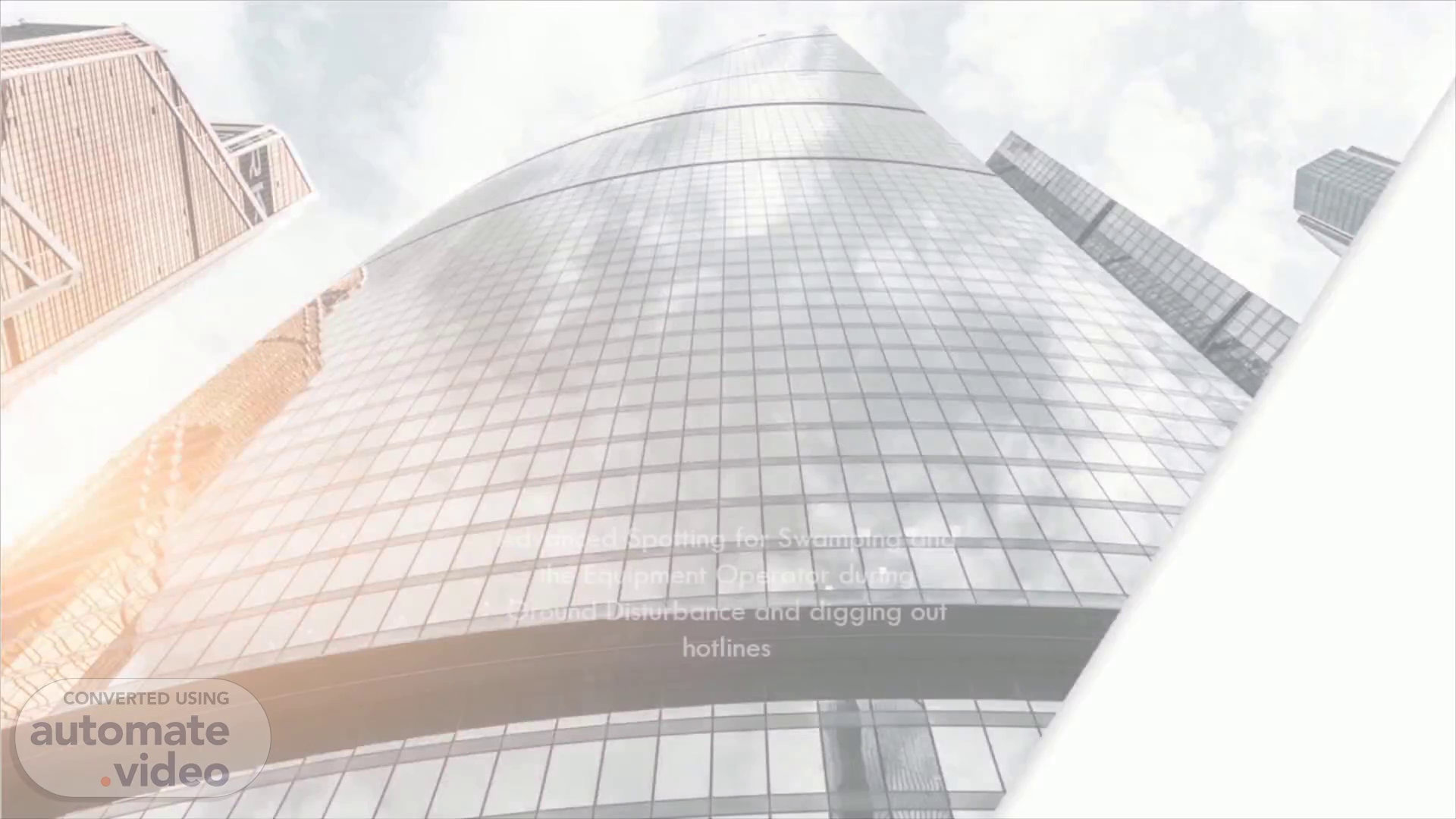
Spotter Awareness Part 2
Scene 1 (0s)
[Audio] Spotter Awareness part 2 Adavnced spotting for swamping and the equipment operator during ground disturbance, and digging out hotlines..
Scene 2 (11s)
[Audio] Hazards need to be observed by both the operator and spotter Things to think about before and during ground disturbance Ensure all workers involved in the ground disturbance have discussed work plan and also gone over line location. Discuss hazards and mitigating actions, that correlate with the ground disturbance checklist, and ensure they are documented on the FLHA. If no ground disturbance checklist has been completed by the oil company rep., then the OMT ground disturbance checklist MUST be completed. Verify that the active lines through work area have been identified and exposed by hydrovac, to ensure direction and depth. Ensure that the equipment is properly spotted on level ground. If conditions change, stop work and re-evaluate the hazards, and mitigate as planned. If there is any discrepancies, or anything seems wrong, STOP ALL WORK AND RE-EVALUATE. For new pipelines that run parallel to, and within 5m of an existing line, the existing line should be hand-exposed or hydrovaced at appropriate intervals to confirm location..
Scene 3 (1m 23s)
[Audio] Spotting while exposing hot lines. Spotting while exposing hot lines.
Scene 4 (1m 30s)
[Audio] Communication between operator and spotter Line of Sight Ensure there is a clear line of sight between operator and spotter at all times. Communicate Signals Spotter and operator should discuss the signals to ensure complete understanding. STOP IF UNCLEAR If at any time, there is unclear instruction, or spotter is not clearly visible, STOP ALL WORK and discuss and reposition, whatever is needed..
Scene 5 (2m 2s)
[Audio] Stopping equipment At anytime, whether unclear of next steps, to even having to reposition, signal operator to stop with arms crossed overhead..
Scene 6 (2m 14s)
[Audio] Digging out hot lines Things to think about during hot line exposure Operator to STOP all digging operations when: Communication is not clear They can not visually see the spotter When the spotter is not in between the bucket and the operator. The things the spotter has to assess for safe work positioning when working with equipment is: Blind Spots. Keep in clear view of the operator at all times. Operator error, mechanical failures, and equipment upsets. Keep clear of path of bucket to avoid any possible incidents. There are 3 means of communication. They are hand signals, 2-way radio and some times verbally A spotter needs to have good vision. They need to remain diligent and alert, and also understand all communication protocols. The FLHA needs to be reviewed before the task, and updated and reviewed when the task changes. Mechanical excavation equipment cannot be used within 60cm (1.9 Feet) of a facility to be exposed, except under the direct supervision of a representative of the owned facility..
Scene 7 (3m 28s)
[Audio] During the job Things to think about while spotting or operating equipment If something doesn't seem right, or if you are unsure of the next step, STOP the job and re-evaluate. Seek any info that you are not sure of. Either the supervisors on site, or the Safety manager will be able to get any information that you may need. There is no reason, at any times, to rush a job. Take the time to perform the job safely. If you see any worker performing a task incorrectly, INTERVENE, and help them correct their tasks. The FLHA needs to be reviewed before the task, and updated and reviewed when the task changes. There are to be no other workers in the equipment's work area, except the spotter, unless the spotter and operator are made aware of their presence, prior to entering the work area. Mechanical excavation equipment cannot be used within 60cm (1.9 Feet) of a facility to be exposed, except under the direct supervision of a representative of the owned facility..
Scene 8 (4m 36s)
[Audio] In case of emergency, equipment operators must shut down equipment if capable of doing so, and head directly to the muster point, taking the safest path..
Scene 9 (4m 48s)
[Audio] Safety isn't expensive, it's priceless The cost of complacency is immeasurable. The cost of safety pales in comparison. Take the time to perform the job safely. Because tomorrow, is your reward for working safely today..
Scene 10 (5m 6s)
Thank you.